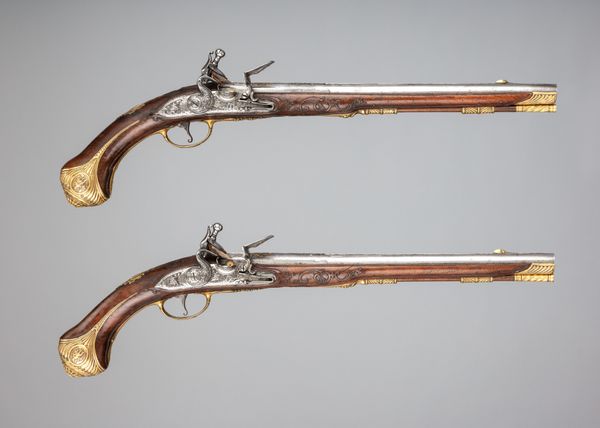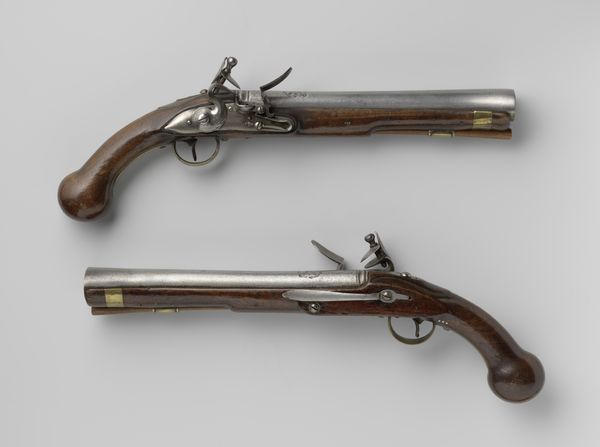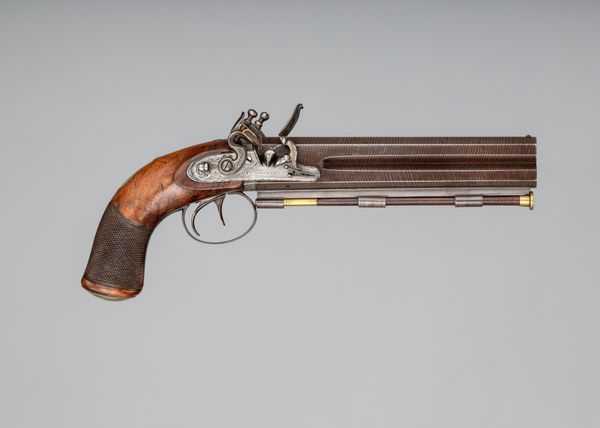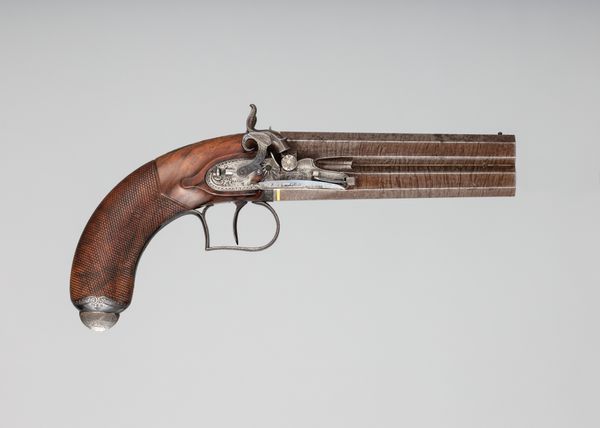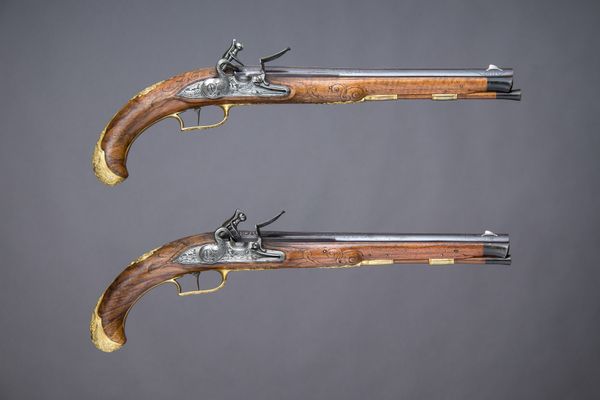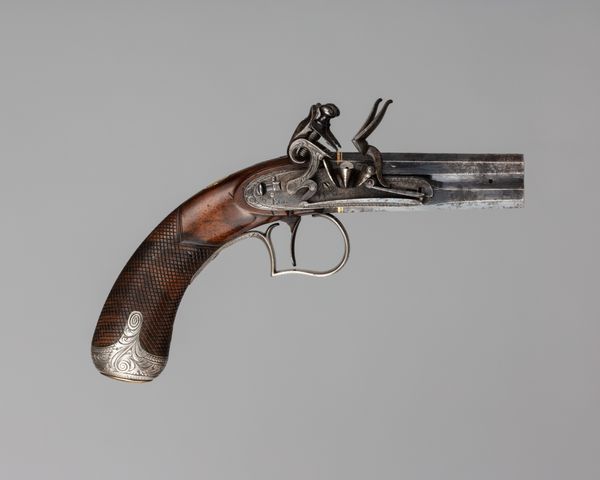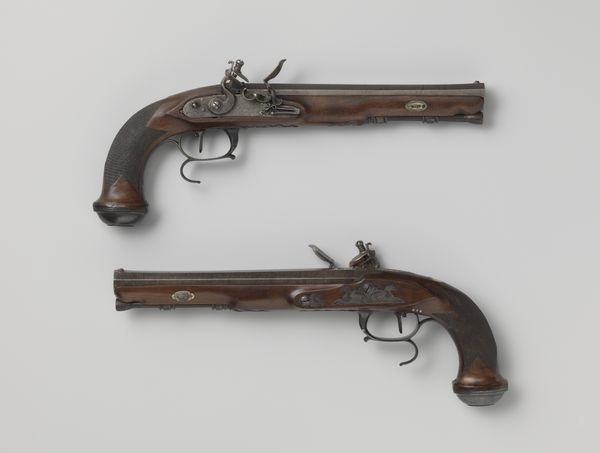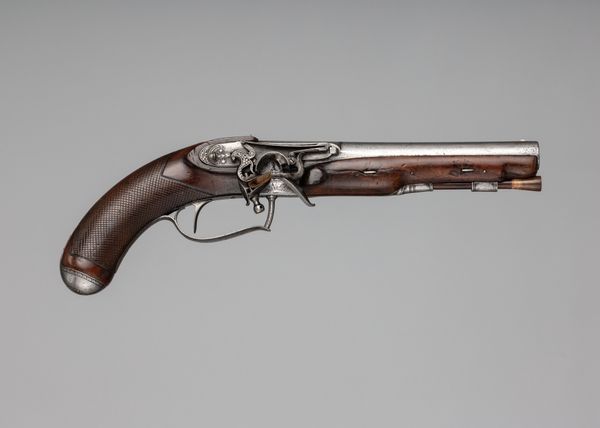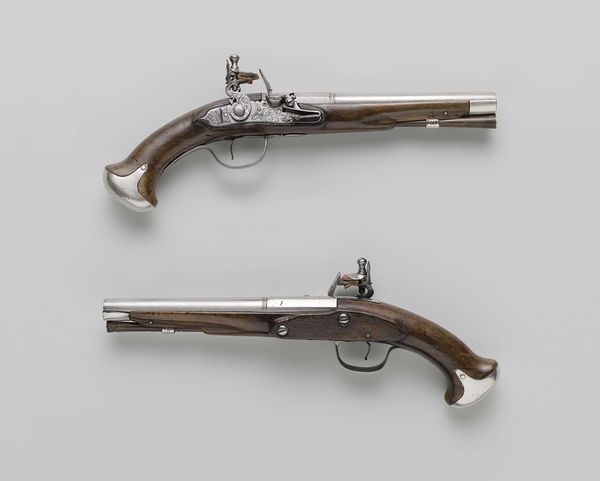
Pair of Flintlock Pistols of the Prince of Wales, later George IV (1762–1830) 1790 - 1794
0:00
0:00
Dimensions: 35.81.1: L. 14 in. (35.6 cm); L. of barrel 8 7/8 in. (22.5 cm); Cal. .62 in. (15.7 mm); Wt. 2 lb. 1.5 oz. (949.7 g); 35.81.2: L. 14 in. (35.6 cm); L. of barrel 8 7/8 in. (22.5 cm); Cal. .64 in. (16.2 mm); Wt. 2 lb. 1.5 oz (949.7 g)
Copyright: Public Domain
These Flintlock Pistols, crafted around 1780 by Durs Egg for the Prince of Wales, embody more than mere weaponry. They represent power, status, and the complex dance of aggression and control. Note the intricate floral motifs etched into the metalwork. These aren't just decorative. They are a recurring symbolic language, an attempt to soften the harsh reality of violence with the beauty of the natural world. This juxtaposition echoes through centuries, recalling ancient Roman depictions of Mars adorned with laurel wreaths, a visual reconciliation of war and peace. Consider how the pistol itself, a tool of destruction, is transformed into an object of art. This transformation reveals a deep-seated human impulse: to imbue symbols of death with a veneer of beauty, perhaps as a means of psychologically managing our primal anxieties. The pistol, a symbol of force, becomes a canvas for the projection of cultural aspirations. The collective memory of conflict and dominance persists, resurfacing and evolving, its emotional charge forever embedded in its form.
Comments
No comments
Be the first to comment and join the conversation on the ultimate creative platform.
